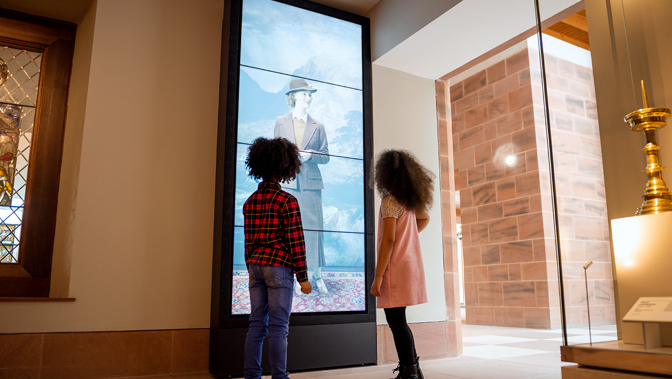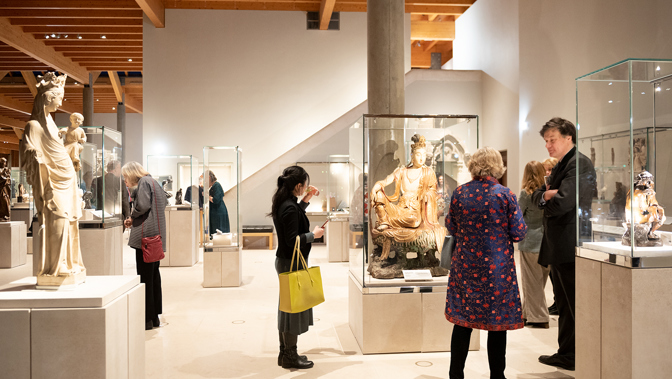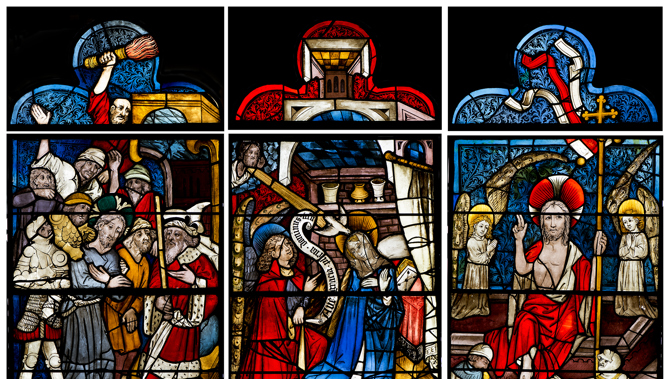Vase Madness
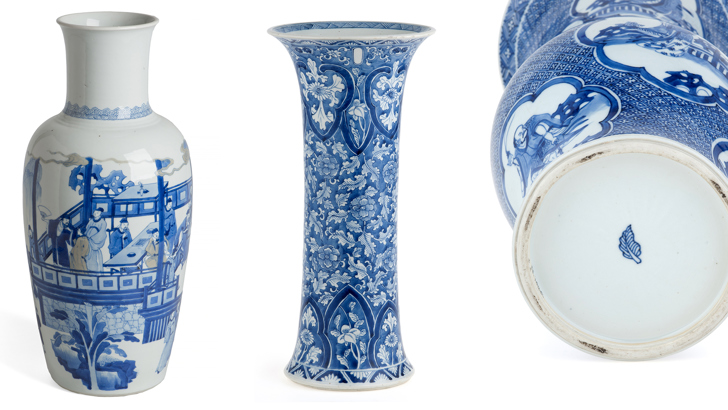
Garnitures provided the finishing touch or garnish to a room
Amassing highly decorated vases and jars in sets and groups, known as a garniture, was all the rage in fashionable European homes from the mid-1600s.
Garnitures provided the finishing touch or garnish to a room. They were placed on mantelpieces, cabinets and door frames. When grouped together in front of mirrors, they seemed to multiply endlessly.
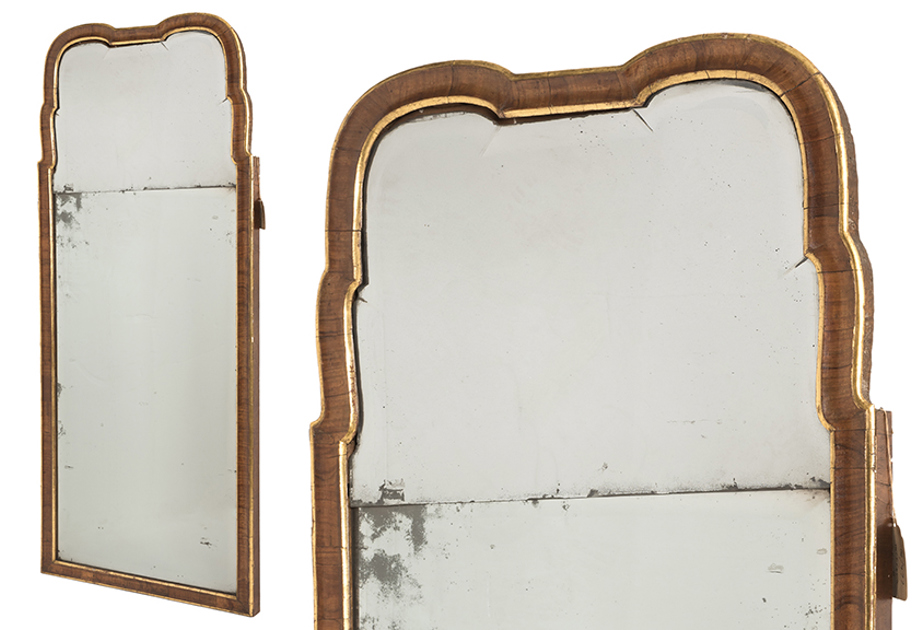
Mirror
At a time when interiors were lit by candles, the golden frame of this mirror shimmered as it caught the light.
About 1710–50
Cross-banded walnut, gilding, bevelled glass
Made in England
14.777

Vase
The milky brown café-au-lait enamel on this blue and white vase is used to make the clouds and some of the figures stand out.
Kangxi Period
1662–1722
Porcelain, underglaze cobalt blue, café-au-lait decoration
Made in Jingdezhen, China
38.1017
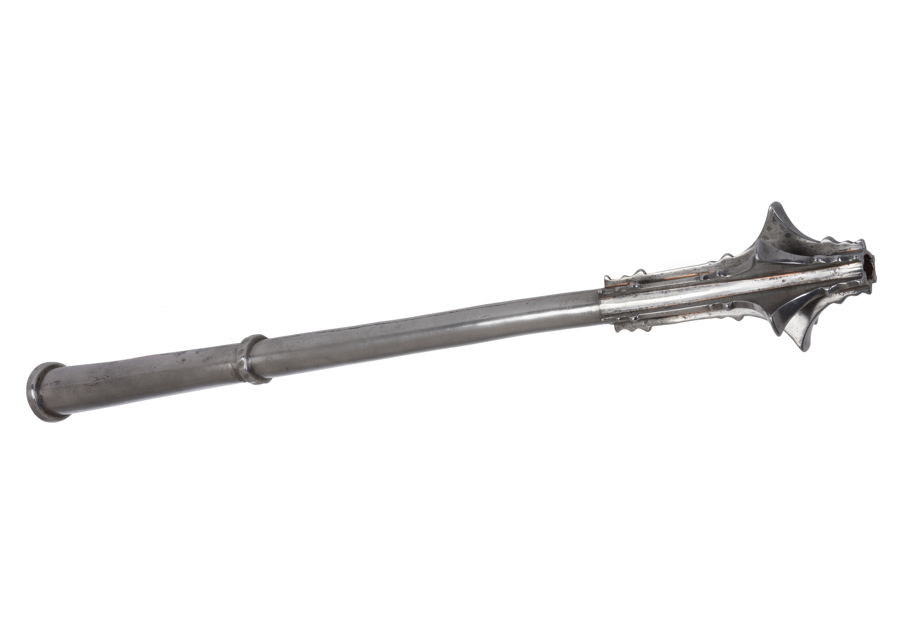
Vase
The cobalt blue added extra colour to fashionable interiors. Candlelight created a sense of theatre in a porcelain sea of blue and white.
Qing Dynasty, Kangxi Period
1662–1722
Porcelain, underglaze cobalt blue decoration
Made in Jingdezhen, China
38.1021

Vase
This vase is decorated with Shouxing, god of Longevity in Chinese mythology.
Qing Dynasty, Kangxi Period
1662–1722
Porcelain, underglaze cobalt blue decoration
Made in Jingdezhen, China
38.1023
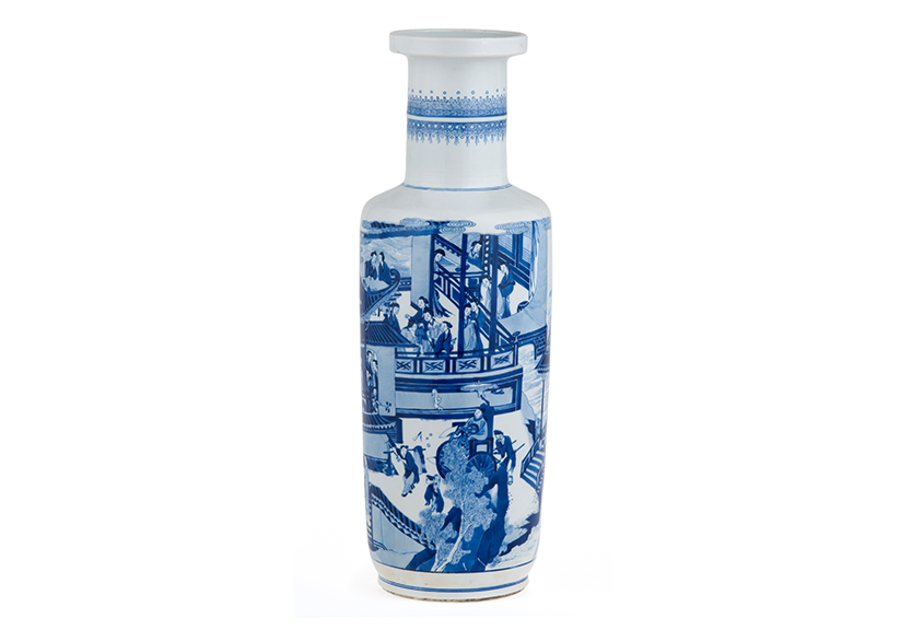
Vase
Pan An (247–300) was a popular writer who was thought to be very handsome. Here he is being showered with affection from the women sitting around him.
Qing Dynasty, Kangxi Period
1662–1722
Porcelain, underglaze cobalt blue decoration
Made in Jingdezhen, China
38.1027

Vase
By choosing vases and jars decorated in brilliant cobalt blue, different patterns and shapes could be united with this single colour.
Qing Dynasty, Kangxi Period
1662–1722
Porcelain, underglaze cobalt blue decoration
Made in Jingdezhen, China
38.1033
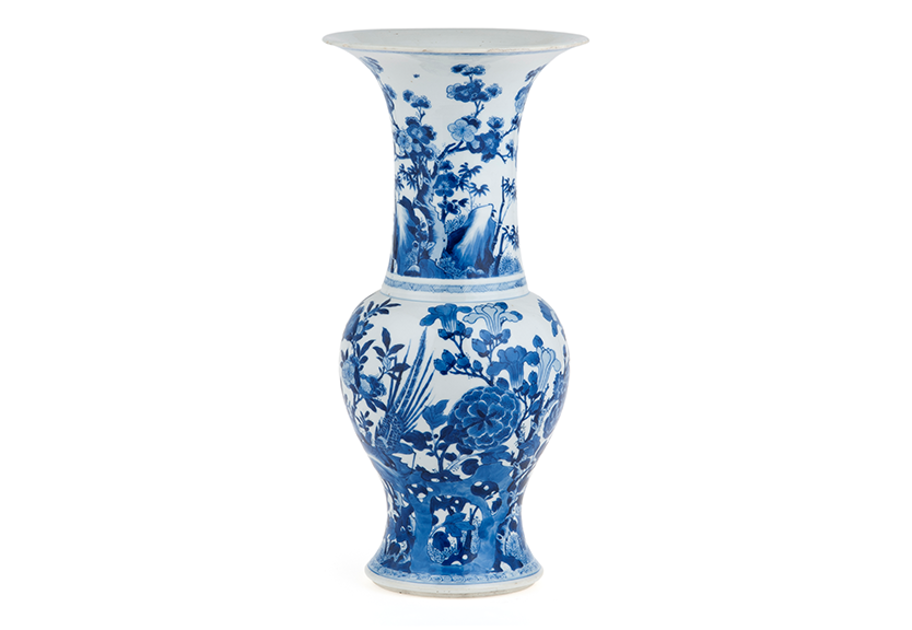
Vase
The flowers on this vase celebrate spring. The magnolia and peony flowers and prunus (plum blossom) all represent spring in Chinese art.
Qing Dynasty, Kangxi Period
1662–1722
Porcelain, underglaze cobalt blue decoration
Made in Jingdezhen, China
38.1034

Vase (one of a pair)
Sets of vases and jars were assembled in Europe from pairs and single pieces of Chinese porcelain. Later on, these were produced as ready-made sets.
Qing Dynasty, Kangxi Period
1662–1722
Porcelain, underglaze cobalt blue decoration
Made in Jingdezhen, China
38.1035

Vase (one of a pair)
Vases and jars could be amassed on top of fireplaces, providing a focal point in a room.
Qing Dynasty, Kangxi Period
1662–1722
Porcelain, underglaze cobalt blue decoration
Made in Jingdezhen, China
38.1036
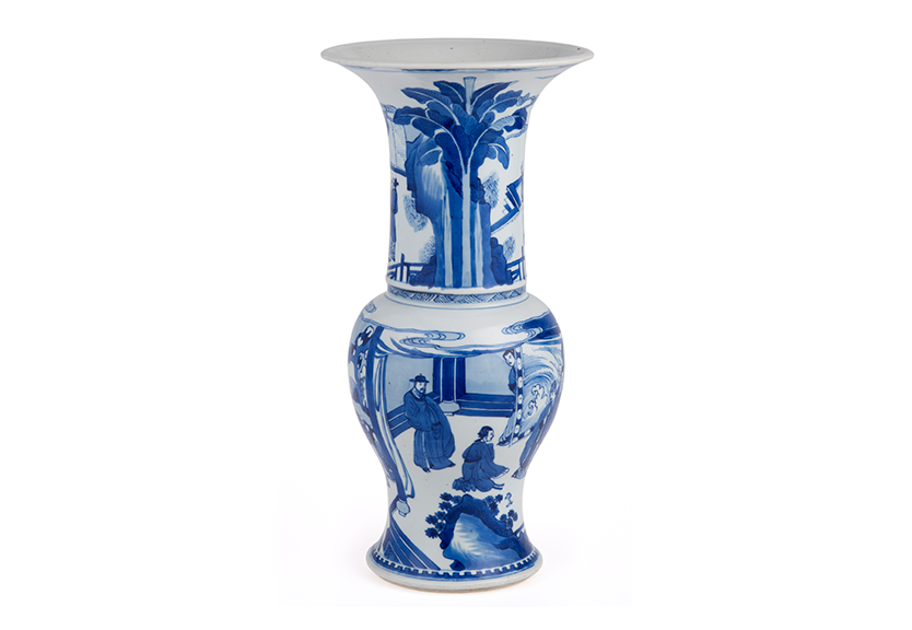
Vase
The Burrell Collection includes 208 Chinese porcelain vases, many of which are blue-and-white. They could decorate the walls of a whole series of rooms.
Qing Dynasty, Kangxi Period
1662–1722
Porcelain, underglaze cobalt blue decoration
Made in Jingdezhen, China
38.1037
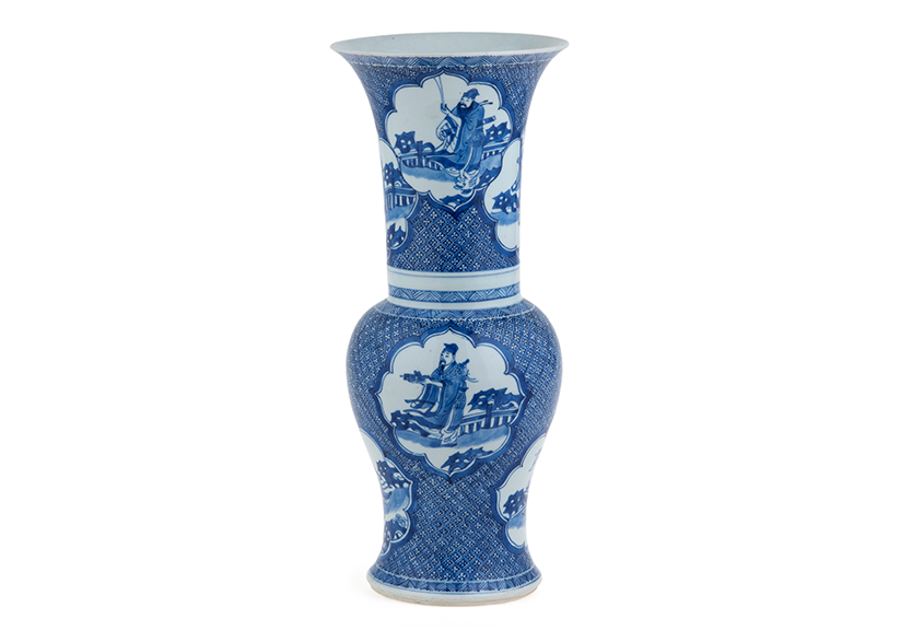
Vase (one of a pair)
Almost the entire surface of this vase has been covered in cobalt blue painted decoration. This would add colour to an interior.
Qing Dynasty, Kangxi Period
1662–1722
Porcelain, underglaze cobalt blue decoration
Made in Jingdezhen, China
38.1039
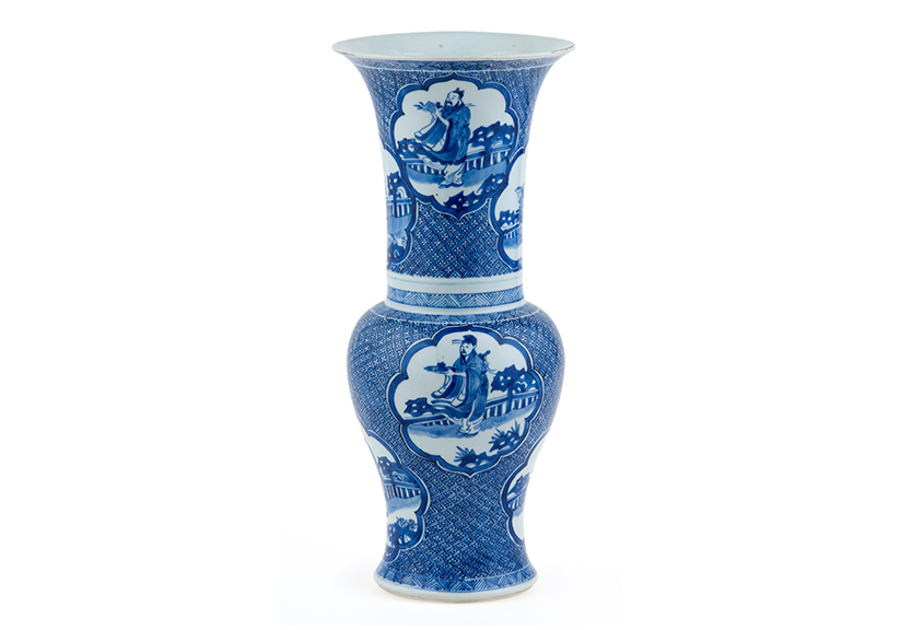
Vase (one of a pair)
The blue decoration on this vase comes from cobalt. Cobalt is a very strong pigment whose colour develops during the firing.
Qing Dynasty, Kangxi Period
1662–1722
Porcelain, underglaze cobalt blue decoration
Made in Jingdezhen, China
38.104O

Vase
This vase is decorated with scrolling lotus flowers. In Chinese Buddhism, the lotus is a symbol of purity, blooming out of the muddy waters it grows in.
Qing Dynasty, Kangxi Period
1662–1722
Porcelain, underglaze cobalt blue decoration
Made in Jingdezhen, China
38.1043

Beaker vase
This beaker vase is as wide at the neck as it is at the foot. It had no obvious function but became a popular part of garniture groups.
Qing Dynasty, Kangxi Period
1662–1722
Porcelain, underglaze cobalt blue decoration
Made in Jingdezhen, China
38.1045
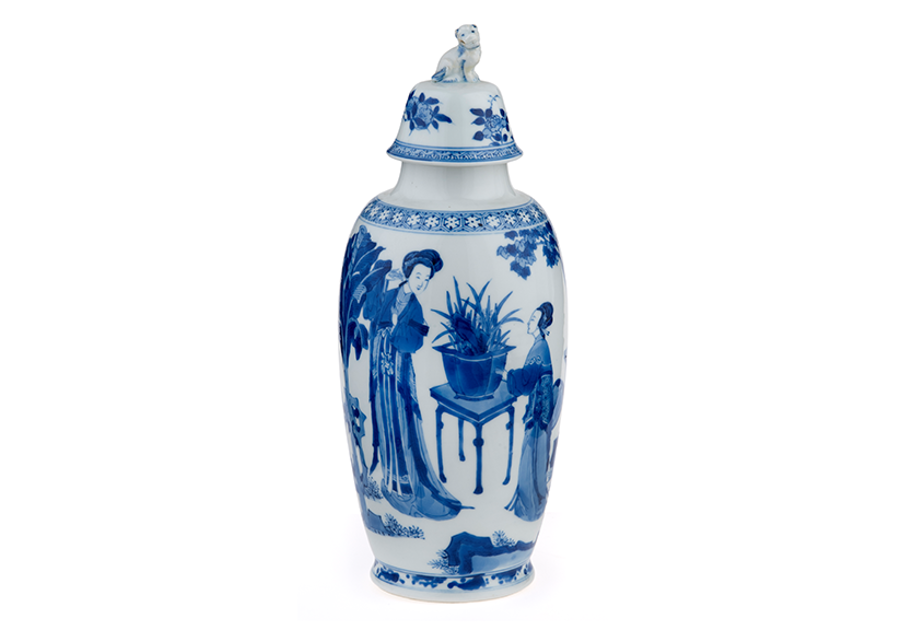
Jar and cover, part of a group
This jar has a cover. This new shape was created for the European market in the early 1600s.
Qing Dynasty, Kangxi Period
1662–1722
Porcelain, underglaze cobalt blue decoration
Made in Jingdezhen, China
38.1049
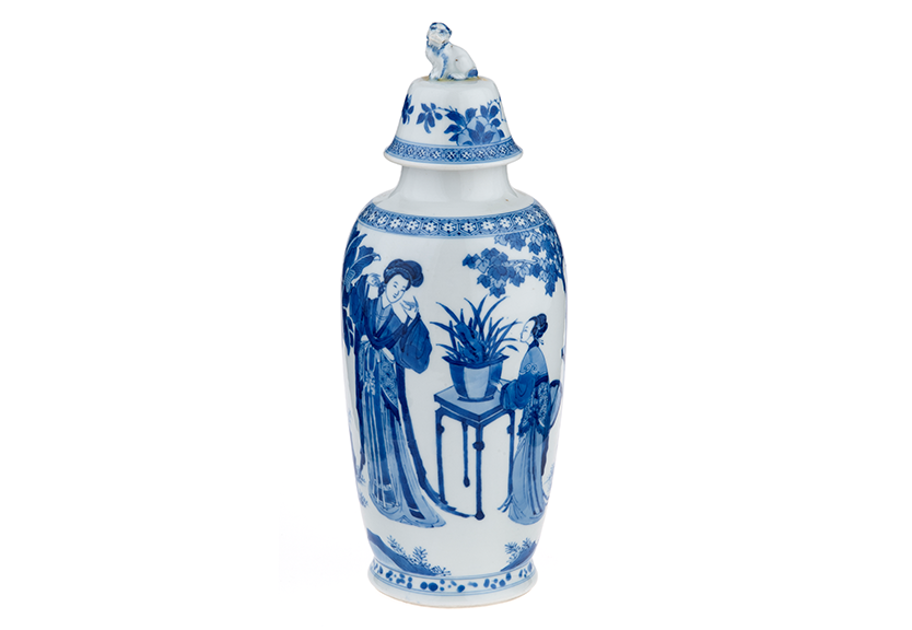
Jar and cover, part of a group
In the 1600s, those that could afford it bought Chinese porcelain to use for dining and to decorate their homes. New shapes such as covered jars were introduced.
Qing Dynasty, Kangxi Period
1662–1722
Porcelain, underglaze cobalt blue decoration
Made in Jingdezhen, China
38.105O
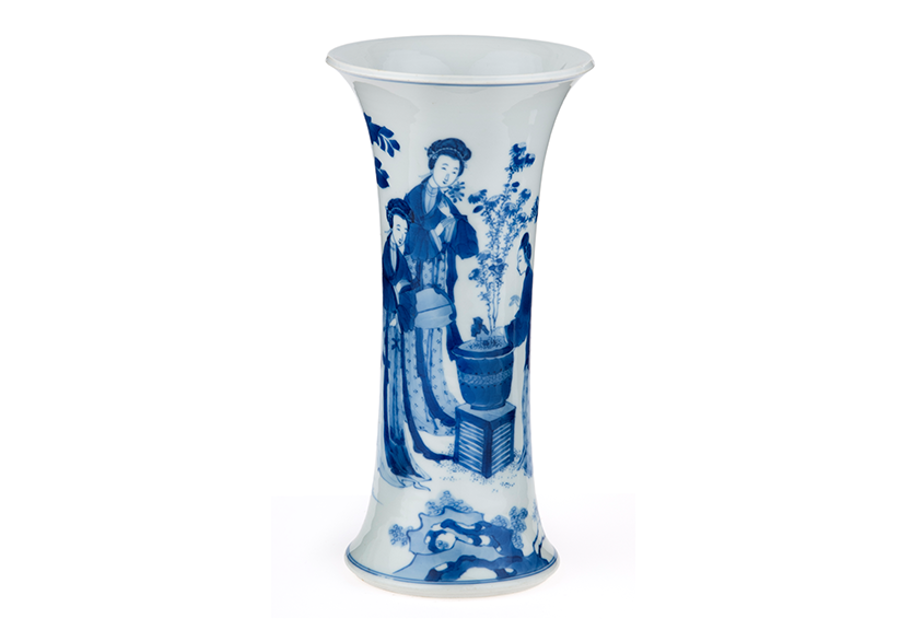
Beaker vase, part of a group
Smaller chimney surrounds with prominent mantelpieces drove the demand for vase garnitures to decorate them.
Qing Dynasty, Kangxi Period
1662–1722
Porcelain, underglaze cobalt blue decoration
Made in Jingdezhen, China
38.1051

Jar and cover, part of a group
Grouping jars together was a way of showing how much porcelain you owned. It was a sign of wealth and status.
Qing Dynasty, Kangxi Period
1662–1722
Porcelain, underglaze cobalt blue decoration
Made in Jingdezhen, China
38.1072

Jar and cover, part of a group
The Chinese porcelain jars and vases used to create garnitures came in different sizes. Smaller jars such as this one were perfect for narrow shelves or mantelpieces.
Qing Dynasty, Kangxi Period
1662–1722
Porcelain, underglaze cobalt blue decoration
Made in Jingdezhen, China
38.1073
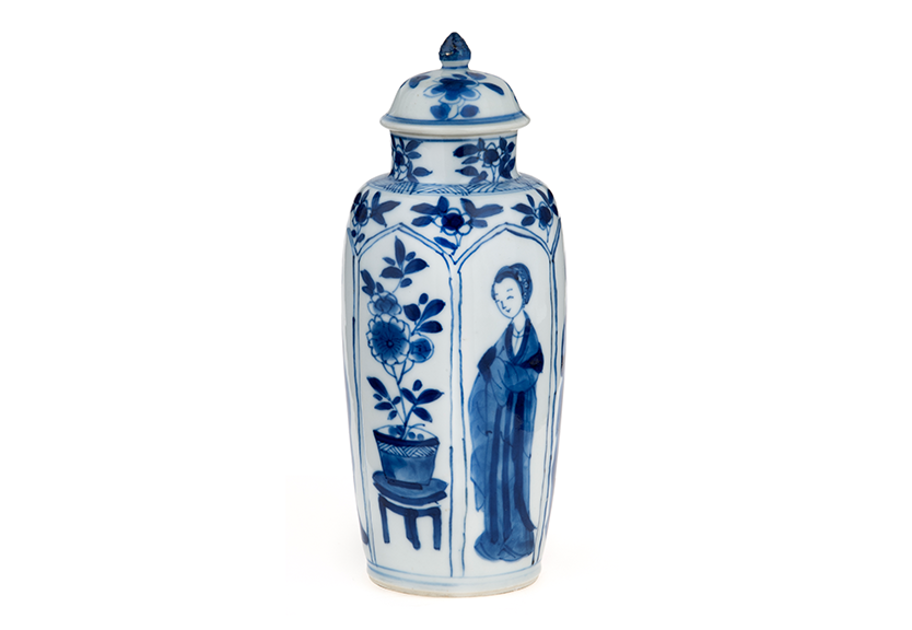
Jar and cover, part of a group
Sir William Burrell bought this porcelain jar in 1937, to add to his collection of over 1,000 items of Chinese porcelain.
Qing Dynasty, Kangxi Period
1662–1722
Porcelain, underglaze cobalt blue decoration
Made in Jingdezhen, China
38.1074
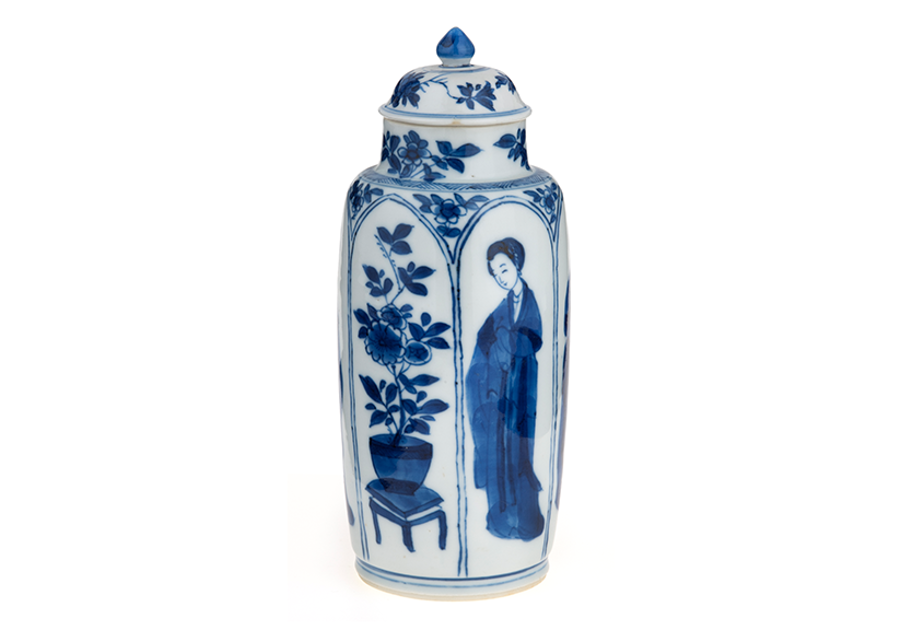
Jar and cover, part of a group
This jar was made during the reign of the Emperor Kangxi, who ruled China between 1662 and 1722. During this period, Chinese porcelain became popular all over the world.
Qing Dynasty, Kangxi Period
1662–1722
Porcelain, underglaze cobalt blue decoration
Made in Jingdezhen, China
38.1075
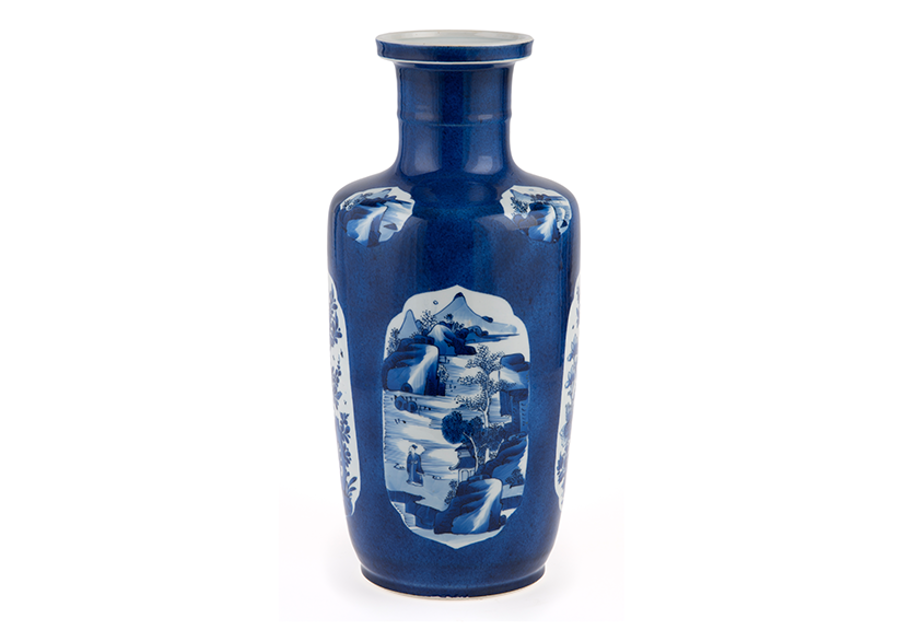
Vase, one of a pair
The cobalt blue on this vase added extra colour to fashionable interiors. In interiors lit by candles, it added sparkle and theatre.
Qing Dynasty, Kangxi Period
1662–1722
Porcelain, underglaze cobalt blue decoration
Made in Jingdezhen, China
38.1329
